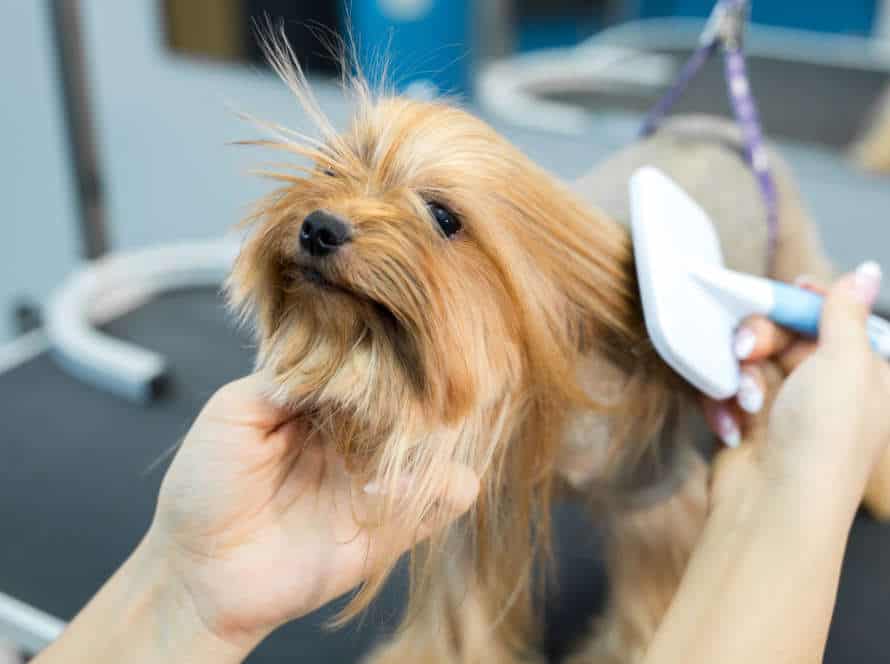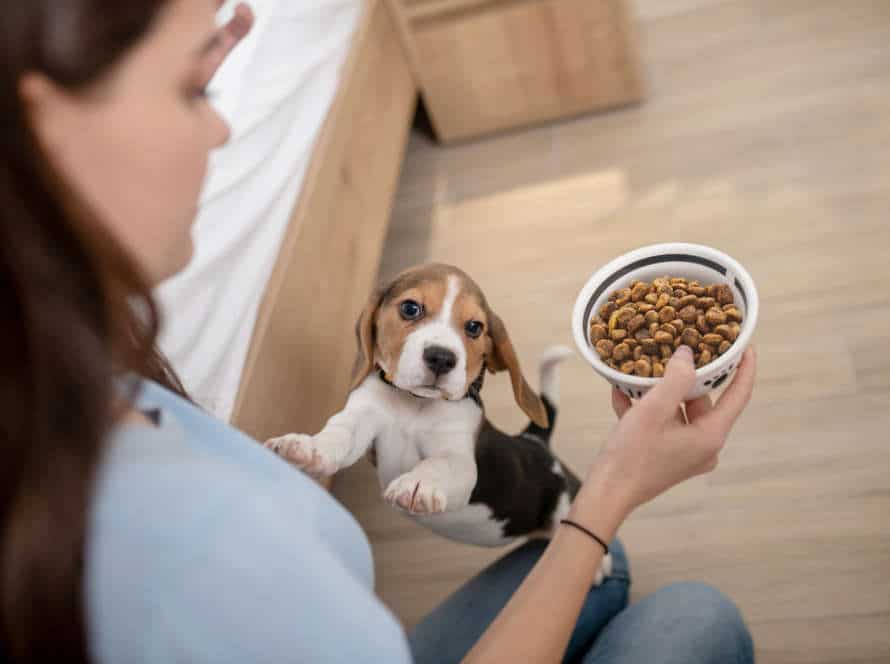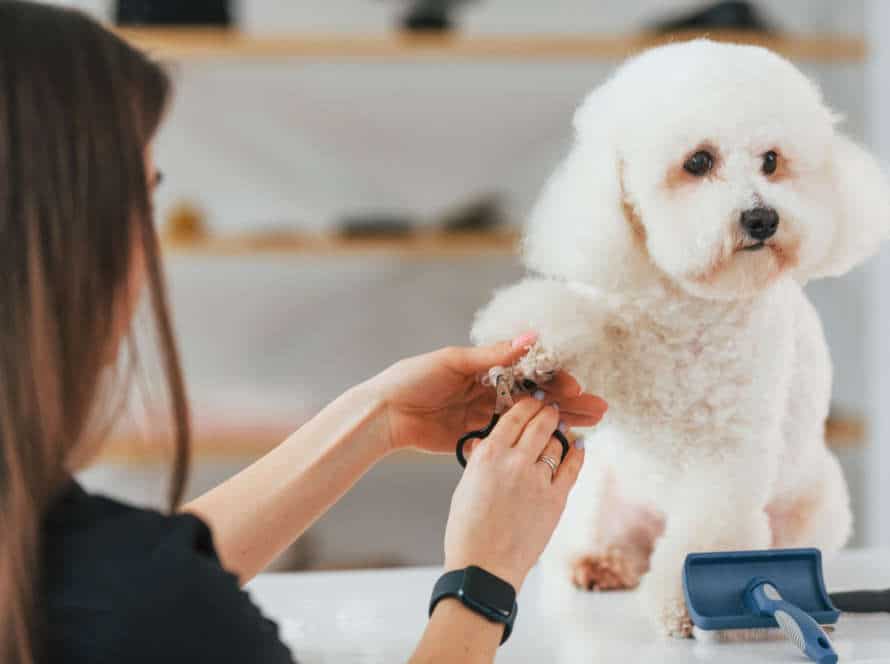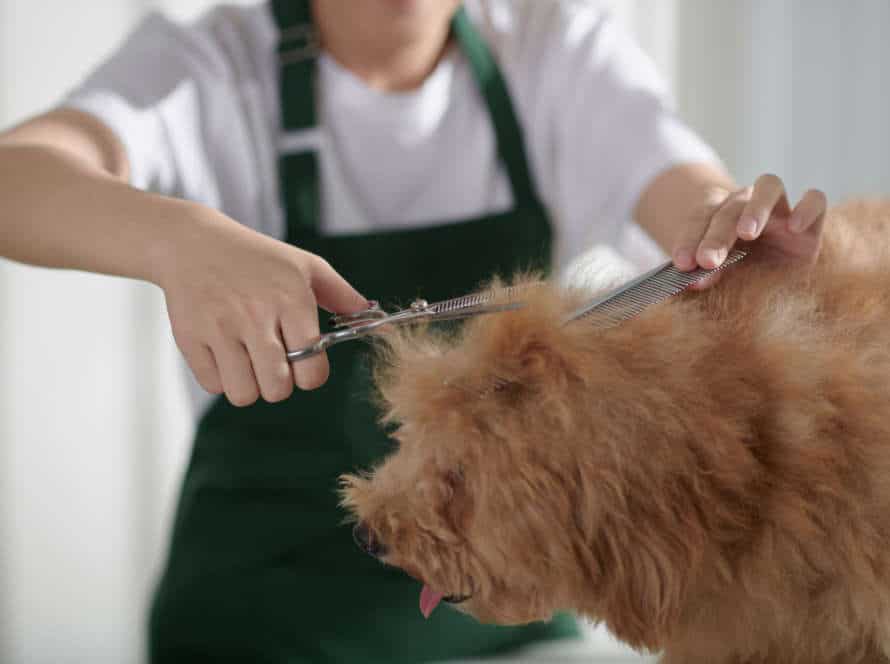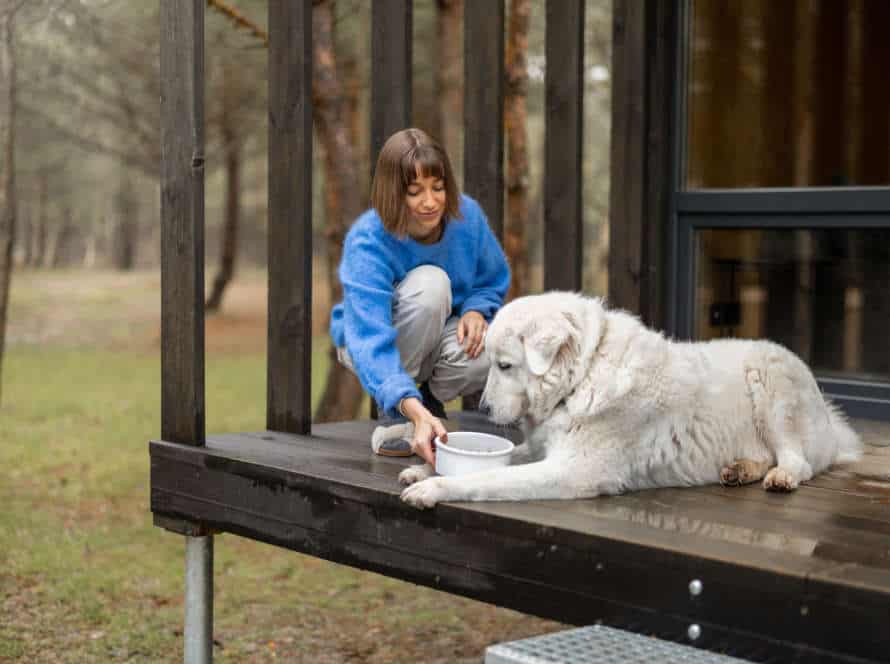Keep Your Senior Dog Happy and Engaged with Positive Reinforcement
Senior doggos need extra care and attention to stay content in their old age. Positive reinforcement is a great way for dog owners to keep their pup happy. Here are some tips:
- Reward good behaviour with treats and compliments, instead of punishing bad behaviour.
- Keep training seshes short and simple, so as to not overwhelm your pup.
- Focus on basic commands like ‘sit’, ‘stay’, ‘come’ and ‘lay down’. This helps create a routine and better communication.
- Introduce new toys and puzzles to stimulate their mind and keep them interested.
- Exercise and socializing with other doggos and humans is important to keep your senior pup active and satisfied.
- Remember that positive reinforcement takes patience and consistency. With time and effort, you’ll strengthen your bond and improve their life quality!
Providing Adequate Exercise and Physical Activity
Exercise is key for keeping our senior furry friends happy and engaged. It stops their muscles from deteriorating, boosts endorphins and gives them a chance to explore and socialize. But, how much exercise should we give? And, what’s the best way to give it to them? Let’s figure it out!
Importance of exercise for senior dogs
As your pup grows older, exercise is essential for their well-being. Get them involved in activities with positive reinforcement to keep them content. Exercise helps:
- Maintain muscle mass and strength.
- Reduce stiffness and increase flexibility.
- Keep bones and joints healthy.
- Manage weight gain and improve metabolism.
- Reduce stress and better overall behavior.
Your senior pup can go for short walks, swim, play interactive games, etc. Ask your vet for the best exercise routine for your pet.
Recommended types of exercises and activities
As dogs get older, their exercise needs change. It’s vital to offer them the right exercises and activities to make them fit, joyful, and involved. Here are some suggested activities and exercises for senior dogs:
- Short walks: Older dogs may not manage long walks, but they still need regular exercise. Short walks help them stay active and boost their health.
- Swimming: Swimming is a low-impact exercise which is great for senior dogs with joint issues. This exercise helps strengthen the heart, takes away stress from joints, and helps build up stamina.
- Puzzle toys: Puzzle toys are mentally stimulating and keep dogs busy for longer. They help improve their cognitive skills and offer entertainment.
- Tug of war: Tug of war is an amusing game that helps build strength and encourages strong bonds between dogs and their owners. Just be careful to avoid injury when playing this game.
With positive reinforcement, these exercises and activities can help your senior dog stay healthy and happy for years to come.
Keeping exercise safe for senior dogs
As your furry pal grows older, it’s important to make sure exercise and physical activity stay a part of their routine. But, to keep them safe, you must ensure their exercises avoid injuries, strains, or exhaustion. Here are some helpful tips:
- Keep it low impact: Such as walking, swimming, or light playtime which is easier on their joints and muscles.
- Use positive reinforcement: Reward them with treats, praise, and toys to keep them motivated.
- Allow time for rest and recovery: Senior dogs need more rest between exercise sessions.
- Try senior-specific exercises: Routines made for them help with endurance, balance, and joint health.
Pro Tip: Visit the vet regularly to keep your senior pup fit and healthy!
Mental Stimulation and Enrichment for Dogs
Give your senior pup joy! Stimulate their brains to keep them healthy and active. Positive reinforcement is a top-notch way to offer mental stimulation. Let’s examine the methods and benefits of using positive reinforcement and mental enrichment when caring for your older dog.
Importance of mental stimulation for senior dogs
Mentally stimulating senior dogs is essential for their health and happiness. Here are the advantages:
- Reduces boredom and bad behavior.
- Enhances memory and cognitive skills.
- Creates socialization and bonding with owners.
- Increases confidence and reduces worry.
- Improves physical activity and overall health.
For mental stimulation, there are plenty of options:
- Use positive reinforcement in training.
- Give interactive toys and puzzles.
- Foster socializing with other dogs and humans.
- Find activities to match your senior dog’s interests.
By providing mental stimulation, senior dogs can enjoy their life to the fullest.
Recommended types of enrichment activities
Enrichment activities are great for all dog ages, especially seniors. Here’s some that can stimulate and reward your senior pup:
- Puzzle toys: To challenge them and keep them busy.
- Snuffle mats: Low-impact nose work activities to stimulate their sense of smell.
- Tug toys: Interactive play, bonding, and endorphin release.
- Treat-dispensing toys: For problem solving and working for rewards.
Keep your senior pup happy, engaged, and positively reinforced with enrichment activities!
Engaging senior dogs’ senses for mental stimulation
Engaging a senior dog’s senses: essential for mental stimulation and enrichment, plus happiness and positive reinforcement.
Options:
- Smell: Hide treats around the house or yard. Offer a range of scents like cheese, meat, peanut butter.
- Sound: Play calming music or nature sounds. Soothes anxiety, provides a relaxing environment.
- Touch: Comfortable bed, gentle massages. Ease joint pain and stiffness.
- Taste: Variety of flavors and textures in their food. Boiled chicken, vegetables, dry kibble, wet food – keep them interested.
- Sight: Provide toys and games. Puzzle feeders, soft toys, balls – keep them visually stimulated.
Engaging senses = healthy mental state. Enriching experiences keep them happy and engaged.
Positive Reinforcement Training Techniques
Positive reinforcement is a successful approach for training your elderly pooch! It is all about rewarding desirable behavior and eliminating any negative reinforcement. This type of training is perfect to maintain your pup engaged, motivated and cheerful. Let us take a look at the numerous positive reinforcement techniques and how you can most efficiently use them with your senior doggo!
Obedience training for senior dogs
It’s not too late to train your elderly pup! Positive reinforcement techniques will make them feel great, and build a strong bond between you and your furry buddy.
Here are some of these techniques you can use:
- Clicker Training: Use a clicker, followed by a treat, to signal desired behaviour. Over time, your pup will associate the click with good behaviour.
- Treat Training: Give small, healthy treats when they do well. This will reinforce their positive behaviour.
- Verbal Praise: Senior dogs still want attention and love. Let them know you’re pleased with their behaviour with verbal praise.
Pro tip: Senior dogs may take longer to learn. Be patient and persistent, and make sure it’s fun for both of you!
Clicker training for positive reinforcement
Clicker training is a great way to teach dogs of all ages, including senior ones. How does it work? A clicker, which makes a distinct sound, is used. It is linked to something positive like a treat, praise or toy.
The trainer gives a command. When the dog follows it, the trainer clicks the clicker and rewards the dog. The sound of the clicker is associated with good behavior. So, the dog will repeat the same behavior to get a reward.
Clicker training is humane, effective and fun. Plus, it can help senior dogs stay happy and mentally sharp. It is also a great tool for dogs with separation anxiety, aggression or fear.
Tip: To get started, buy a clicker and treats. Remember, always use positive reinforcements!
Importance of consistency in training for senior dogs
Consistency is essential when training senior dogs with positive reinforcement. They need patience and persistence, and to keep them content, active, and mentally alert, a steady training plan is a must! Here’s why consistency matters for senior dogs:
- It forms a pattern–consistent training helps senior pups identify what’s expected of them, giving them a pattern to follow easily.
- It improves memory–senior dogs need more repetition in order to learn new habits and hold onto info.
- It creates a stronger bond–constant positive reinforcement strengthens the relationship between senior dogs and their owners, fostering trust and love.
By staying consistent with training and using positive techniques, you can help your senior dog stay sharp and healthy, while also building a closer bond.
Nutrition and Health Care for Senior Dogs
Nutrition and health care are important for senior dogs. Their diet should be tailored to their age, size, and activity level. This will help them stay healthy and get the necessary vitamins and minerals. Additionally, frequent vet check-ups can help spot any potential health issues. Let us investigate how nutrition and health care can make your canine companion content and active in their golden years!
Recommended diet for senior dogs
As your pup ages, their nutritional needs change. It’s essential to adjust their diet. Here’s a recommended diet for senior dogs to keep them healthy and happy.
- Protein: Senior dogs need more protein than younger ones to keep muscle mass. Give them quality animal-based protein sources like chicken, beef, and fish.
- Carbohydrates: Senior dogs should eat complex, easy-to-digest carbs for energy. Brown rice, oatmeal, and sweet potatoes are great choices.
- Fruits and Vegetables: Fibre-rich fruits and vegetables help with digestive health in senior dogs. Try blueberries, spinach, and broccoli.
- Dietary Supplements: Glucosamine, chondroitin, and Omega-3 fatty acids can help joint health and reduce inflammation.
Always talk to your vet to tailor the best diet plan for your senior pup’s needs.
Importance of regular vet visits
Vet visits are key for senior dog health. As dogs age, they face issues like us humans – arthritis, obesity and dental problems. Regular vet checkups can spot problems early and manage them.
Your vet will do tests – blood work, urinalysis and parasite checks – to get insights into your pup’s health and prevent common health issues.
Nutrition is also important. Feed them high-quality dog food, not table scraps. That can cause digestive trouble and mess up the nutrition balance.
Exercise and positive reinforcement are great for mental and physical wellbeing. Give them exercise and attention, and use positive reinforcement training.
Pro Tip: Schedule annual vet exams and keep a record of their vaccinations, meds and treatments. This can help you track their health, and any issues can be spotted quickly.
Supplements for senior dog health
As dogs age, health issues such as a weakened immune system, joint pain, and other age-related ailments may arise. Supplements can be used to improve their health and well-being. Here are some supplements that could help senior dogs:
- Glucosamine: This supplement can improve joint health and mobility in elderly dogs with joint problems or arthritis.
- Omega-3 Fatty Acids: This supplement can help senior dogs with skin, joint, and heart issues. It can also help to boost cognitive function.
- Probiotics: As dogs age, their digestive systems may weaken. Probiotics can help keep gut health in check, and prevent diarrhea.
- Vitamins A, C, and E: These supplements can help senior dogs by boosting their immune system, improving cognitive function, reducing inflammation, and supporting healthy skin and coat.
Before starting your dog on any supplements, it’s important to consult a vet. A healthy and balanced diet, regular exercise, and positive reinforcement training can also improve the health, happiness, and engagement of senior dogs.
Dealing with Age-Related Issues
Age-related issues can be tough to manage in senior dogs. But with the correct approach, you can maintain your pooch’s joy!
Positive reinforcement is a good way to do this. It is a training technique that rewards desirable behaviors. Learn more about it in this article and how it can help keep your senior pup contented and stimulated.
Health issues to watch out for in senior dogs
Ageing dogs are more prone to health issues that can reduce their quality of life. Common issues to look out for:
- Arthritis: Joint pain and stiffness can cause limping, difficulty getting up and going down stairs.
- Dental Issues: Gum disease, tooth decay and loss can occur. Regular dental check-ups and cleaning help prevent this.
- Cognitive Dysfunction: Disorientation, changes in behaviour, trouble recognising people and places. Similar to Alzheimer’s in humans.
- Incontinence: Females are more prone. Watch out for urine leakage or accidents.
By being aware of these issues and monitoring your senior dog’s health, you can keep them happy and engaged. Positive reinforcement, love and attention can help make them feel comfortable.
Managing age-related mobility issues
Managing mobility issues in older dogs? It takes some extra TLC. Positive reinforcement techniques can make them active without straining their joints and muscles. Here are some tips to keep your pup content and healthy:
- Gentle activities like slow walks or swimming to keep their muscle tone and flexibility.
- A comfy, supportive bed to ease joint pressure.
- Plenty of love and compliments to keep their spirits high and reduce stress.
- Positive training techniques, like treats or toys as rewards to keep their minds sharp and keep them entertained.
- Monitor your pup and give assistance when needed. Eg. A harness to help them move or aiding them with stairs.
With some extra care, attention, and positive reinforcement, you can help your senior dog manage their mobility issues and have a happy life.
Creating a safe and comfortable living space for senior dogs
As dogs age, they’re more at risk of age-related issues like joint pain, reduced mobility, and cognitive decline. To make sure senior dogs have a comfy and happy life, here are some tips:
- Buy a comfy bed. This’ll help them get quality sleep, support their joints, and reduce pain.
- Use flooring that’s not slippery. Senior dogs can find it hard to walk on slippery surfaces, so use carpets and rugs that don’t slip.
- Choose the right food. High-quality food, with all the right nutrients, is essential for senior dogs.
- Offer them a safe space. Get them a crate or cozy nook where they can rest and feel secure.
- Use positive reinforcement. Senior dogs need more praise and motivation, so use treats to reward them when they do something good.
By following these tips, your senior dog will be happy and engaged. Plus, regular exercise and vet check-ups are important for their health.
Frequently Asked Questions
1. What is positive reinforcement for senior dogs?
Positive reinforcement for senior dogs is a training technique that involves rewarding good behavior instead of punishing bad behavior. It’s a technique that uses treats, toys, and praise to motivate and encourage your senior dog to repeat actions or behaviors that you want to encourage.
2. Is positive reinforcement suitable for senior dogs?
Yes, positive reinforcement is highly suitable for senior dogs. In fact, this training technique is recommended for all dogs, regardless of age or breed. Senior dogs can benefit from positive reinforcement training as it keeps them engaged, mentally stimulated, and physically active.
3. Why is it important to keep senior dogs happy and engaged?
Keeping your senior dog happy and engaged is essential for their overall health and wellbeing. A happy, engaged senior dog is more likely to be mentally alert, physically active, and have a better quality of life. It also helps to prevent behavioral issues such as depression, anxiety, and aggression.
4. What are some positive reinforcement techniques I can use to keep my senior dog happy?
Some positive reinforcement techniques include using treats, toys, and praise to reward good behavior. You can also keep your senior dog happy and engaged by introducing them to new toys and puzzles, taking them on regular walks, and spending quality time with them.
5. Can positive reinforcement training be used to teach new tricks to senior dogs?
Yes, positive reinforcement training is an effective method for teaching senior dogs new tricks. It’s a gentle, humane technique that encourages your senior dog to learn and try new things without fear of punishment or reprimand. With patience and consistency, your senior dog can learn a range of new tricks and commands.
6. How can I start positive reinforcement training with my senior dog?
Starting positive reinforcement training is easy. Begin by identifying a few behaviors that you want to encourage in your senior dog, such as sitting or staying. Use treats or toys to reward your senior dog when they exhibit these behaviors. Be consistent with the rewards, and gradually introduce new behaviors over time.


